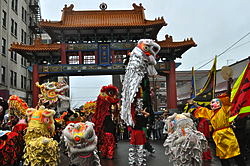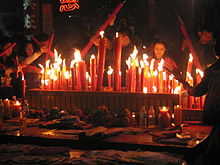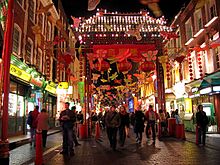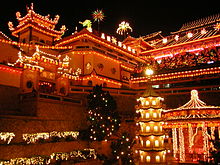Chinese New Year 2023

Chinese New Year Song 2013
A cute and beautiful Chinese New Year wish for your loved one.
 Chinese New Year is the most important of the traditional Chinese holidays. In China, it is also known as the Spring Festival, the literal translation of the modern Chinese name. Chinese New Year celebrations traditionally ran from Chinese New Year’s Day itself, the first day of the first month of the Chinese calendar, to the Lantern Festival on the 15th day of the first month, making the festival the longest in the Chinese calendar. Because the Chinese calendar is lunisolar, the Chinese New Year is often referred to as the “Lunar New Year.”
Chinese New Year is the most important of the traditional Chinese holidays. In China, it is also known as the Spring Festival, the literal translation of the modern Chinese name. Chinese New Year celebrations traditionally ran from Chinese New Year’s Day itself, the first day of the first month of the Chinese calendar, to the Lantern Festival on the 15th day of the first month, making the festival the longest in the Chinese calendar. Because the Chinese calendar is lunisolar, the Chinese New Year is often referred to as the “Lunar New Year.”
The origin of Chinese New Year is itself centuries old and gains significance because of several myths and traditions. Traditionally, the festival was a time to honor deitiesas well as ancestors. Chinese New Year is celebrated in countries and territories with significant Chinese populations, including Mainland China, Hong Kong, Macau, Taiwan, Singapore, Thailand, Indonesia, Malaysia, Mauritius, Philippines, and also in Chinatowns elsewhere. Chinese New Year is considered a major holiday for the Chinese and has had influence on the lunar new year celebrations of its geographic neighbors.
Within China, regional customs and traditions concerning the celebration of the Chinese new year vary widely. Often, the evening preceding Chinese New Year’s Day is an occasion for Chinese families to gather for the annual reunion dinner. It is also traditional for every family to thoroughly cleanse the house, in order to sweep away any ill-fortune and to make way for good incoming luck. Windows and doors will be decorated with red colour paper-cuts and couplets with popular themes of “good fortune” or “happiness,” “wealth,” and “longevity.” Other activities include lighting firecrackers and giving money in red paper envelopes.
Although the Chinese calendar traditionally does not use continuously numbered years, outside China its years are often numbered from the reign of the Yellow Emperor. But at least three different years numbered 1 are now used by various scholars, making the year beginning in 2013 AD the “Chinese Year” 4711, 4710, or 4650.
Names in Chinese
Chinese New Year eve in Meizhou on February 8, 2005.
Traditionally, the festivities surrounding Chinese New Year was known as the Nian festival (traditional Chinese: 年節; simplified Chinese: 年节; pinyin: Nián Jié), which may be understood to as “festival of the year”, or “new year festival”. A derivative term, “Guo Nian” (traditional Chinese: 過年; simplified Chinese: 过年; pinyin: guò Nián), “to pass the year”, is still commonly used to refer to the act of celebrating the arrival of the new year. An alternative name for Chinese New Year is “New Year in the Agricultural Calendar” (traditional Chinese: 農曆新年; simplified Chinese: 农历新年; pinyin: Nónglì Xīnnían), the “Agricultural Calendar” being one of the more common Chinese language names for the Chinese calendar in China.
New Year’s Day itself was traditionally called Yuandan (Chinese: 元旦; pinyin: Yuándàn), literally “the first sunrise”, but in 1913 the recently established Republic of China government appropriated that name to refer instead to New Year’s Day in the newly adopted Gregorian Calendar, with Chinese New Year instead being called “Spring Festival” (traditional Chinese: 春節; simplified Chinese: 春节; pinyin: Chūnjié), which remains the official name for the New Year’s Day public holiday in both mainland China and Taiwan. Prior to 1913, “Spring Festival” instead referred to lichun, (February 4 or 5), the first solar term in a Chinese calendar year, which marked the end of winter and start of spring.
London: Chinatown with Chinese New Year decoration
An alternative name for Chinese New Year’s Day means literally “the first day of the (great) year” (Chinese: (大)年初一; pinyin: (Dà) Nián Chūyī). The New Year’s Day public holiday in Hong Kong and Macau is named in Chinese, as literally “first day of the year in the Agricultural Calendar” (traditional Chinese: 農曆年初一; simplified Chinese: 农历年初一; pinyin: Nónglì Nián Chūyī) while the official English name is “the first day of Lunar New Year.”
Chinese New Year’s Eve, a day where Chinese families gather for their annual reunion dinner, is known as Chúxī (除夕), literally “evening of the passing.”
Animal |
Branch |
New Year dates |
||
|---|---|---|---|---|
鼠 Shǔ Rat |
子 Zǐ |
1996-02-19 |
2008-02-07 |
2020-01-25 |
牛 Niú Ox |
丑 Chǒu |
1997-02-07 |
2009-01-26 |
2021-02-12 |
虎 Hǔ Tiger |
寅 Yín |
1998-01-28 |
2010-02-14 |
2022-02-01 |
兔 Tù Rabbit |
卯 Mǎo |
1999-02-16 |
2011-02-03 |
2023-01-22 |
龍 Lóng Dragon |
辰 Chén |
2000-02-05 |
2012-01-23 |
2024-02-10 |
蛇 Shé Snake |
巳 Sì |
2001-01-24 |
2013-02-10 |
2025-01-29 |
馬 Mǎ Horse |
午 Wǔ |
2002-02-12 |
2014-01-31 |
2026-02-17 |
羊 Yáng Goat |
未 Wèi |
2003-02-01 |
2015-02-19 |
2027-02-07 |
猴 Hóu Monkey |
申 Shēn |
2004-01-22 |
2016-02-08 |
2028-01-27 |
雞 Jī Rooster |
酉 Yǒu |
2005-02-09 |
2017-01-28 |
2029-02-13 |
狗 Gǒu Dog |
戌 Xū |
2006-01-29 |
2018-02-16 |
2030-02-03 |
豬 Zhū Pig |
亥 Hài |
2007-02-18 |
2019-02-05 |
2031-01-23 |
The lunisolar Chinese calendar determines the date of Chinese New Year. The calendar is also used in countries that have adopted or have been influenced by Han culture, notably the Koreans, Japanese and Vietnamese.
In the Gregorian calendar, Chinese New Year falls on different dates each year, a date between January 21 and February 20. In the Chinese calendar, winter solstice must occur in the 11th month, which means that Chinese New Year usually falls on the second new moon after the winter solstice (rarely the third if an intercalary month intervenes). In traditional Chinese Culture, lichun is a solar term marking the start of spring, which occurs about February 4.
Southeast Asia‘s largest temple — Kek Lok Si in Penang, Malaysia — illuminated in preparation for the Lunar New Year.
The dates for Chinese New Year from 1996 to 2031 (in the Gregorian calendar) are above, along with the year’s presiding animal zodiac and its earthly branch. The names of the earthly branches have no English counterparts and are not the Chinese translations of the animals. Alongside the 12-year cycle of the animal zodiac there is a 10-year cycle of heavenly stems. Each of the ten heavenly stems is associated with one of the five elements of Chinese astrology, namely: Wood, Fire, Earth, Metal, and Water. The elements are rotated every two years while a yin and yang association alternates every year. The elements are thus distinguished: Yang Wood, Yin Wood, Yang Fire, Yin Fire, etc. These produce a combined cycle that repeats every 60 years. For example, the year of the Yang Fire Rat occurred in 1936 and in 1996, 60 years apart.
Many confuse their Chinese birth-year with their Gregorian birth-year. As the Chinese New Year starts in late January to mid-February, the Chinese year dates from January 1 until that day in the new Gregorian year remain unchanged from the previous Gregorian year. For example, the 1989 year of the snake began on February 6, 1989. The year 1990 is considered by some people to be the year of the horse. However, the 1989 year of the snake officially ended on February 8, 1990. This means that anyone born from January 1 to February 7, 1990 was actually born in the year of the snake rather than the year of the horse. Many online Chinese Sign calculators do not account for the non-alignment of the two calendars, using Gregorian-calendar years rather than official Chinese New Year dates.
One scheme of continuously numbered Chinese-calendar years assigns 4709 to the year beginning , 2011, but this is not universally accepted; the calendar is traditionally cyclical, not continuously numbered.
http://en.wikipedia.org/wiki/Chinese_New_Year




